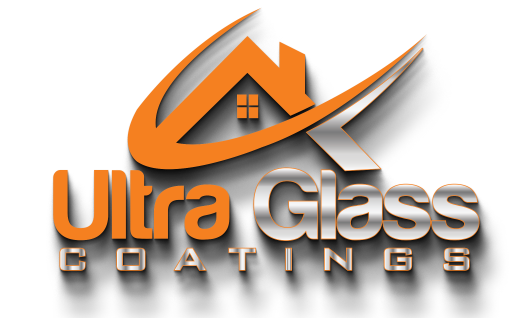| May 17, 2025 |
Researchers developed a Zn-Mg-Mn-Fe nanocomposite that boosts lettuce UV tolerance and nutrient uptake, offering a sustainable advance in crop resilience.
|
|
(Nanowerk Spotlight) Researchers at the Connecticut Agricultural Experiment Station (CAES) are at the forefront of sustainable agriculture, leveraging nanotechnology to address the growing challenges of climate change. One of their studies introduced a novel multielement (Zn–Mg–Mn–Fe) nanocomposite that significantly enhances UV stress tolerance and nutrient accumulation in lettuce. This innovative approach addresses a critical challenge in agriculture, where UV radiation can reduce crop yields by up to 50% in extreme conditions.
|
|
By integrating key micronutrients with UV-absorbing nanoparticles, this nanocomposite not only protects plants from harmful UV radiation but also optimizes nutrient uptake, potentially transforming agricultural practices for better crop resilience, higher productivity, and improved food security. This dual-function nanosunscreen has the potential to reduce the need for chemical fertilizers, lower the carbon footprint of farming, and improve the sustainability of agricultural systems.
|
 |
| Graphical Abstract. (Image: Generated using BioRender.com, courtesy of the authors)
|
Introduction
|
|
As climate change intensifies, agricultural crops are increasingly exposed to environmental stressors like ultraviolet (UV) radiation, which can severely impact plant growth, reduce photosynthetic efficiency, and lower crop yields. This is particularly critical in regions like Australia, southern Europe, and parts of the United States, where intense UV radiation is a constant challenge for farmers.
|
|
In countries like Spain and Italy, known for their high-value tomato and grape industries, UV stress can significantly impact crop quality and yield. Similarly, California’s Central Valley, one of the most productive agricultural regions in the world, faces increasing UV exposure due to changing climate patterns. In response to this challenge, our research team developed a multifunctional nanocomposite containing zinc (Zn), magnesium (Mg), manganese (Mn), and iron (Fe), designed to protect plants from UV-induced damage while enhancing nutrient accumulation.
|
|
Our recently published study in Environmental Science: Nano (“A multi-nutrient nanocomposite enhances UV stress tolerance and modulates nutrient accumulation in lettuce”) demonstrates that this nanocomposite provides significant benefits to Lactuca sativa (lettuce) under high UV stress conditions, including improved photosynthetic efficiency, increased leaf area, and enhanced nutrient uptake.
|
Nanosunscreen Technology for Plants
|
|
The nanocomposite leverages the unique properties of Zn, Mg, Mn, and Fe to create a highly effective UV shield. Zinc acts as a core UV blocker, while magnesium supports chlorophyll function, manganese aids in photosynthetic oxygen evolution, and iron facilitates electron transport. These elements are incorporated into a nanoscale matrix, allowing for controlled nutrient release and improved foliar adhesion. This design not only reduces the harmful effects of UV radiation but also promotes sustainable nutrient delivery, enhancing plant growth and stress tolerance.
|
Material Characterization and UV Blocking Properties
|
|
To confirm the UV-blocking properties of the nanocomposite, several advanced characterization techniques were employed. X-ray diffraction (XRD) analysis revealed distinct crystallographic phases, confirming the presence of multiple metal oxides, including ZnO, MgO, MnO2, and Fe2O3. Sharp peaks at 21.2°, 26.6°, 28.3°, 40.4°, 44.7°, 50.1°, 58.6°, 66.4°, and 73.6° correspond to various crystal planes of these metal oxides, with the peak at 44.7° characteristic of Fe3O4, a key component for UV absorption.
|
|
Fourier Transform Infrared (FTIR) spectroscopy further validated the formation of metal-oxygen bonds, with significant peaks observed at 3323 cm⁻¹ (O-H stretching), 1635 cm⁻1 (H-O-H bending), and 667 cm⁻1 (M-O stretching), indicating strong UV absorption potential. Additionally, UV-Vis and fluorescence studies demonstrated that the nanocomposite emits visible light when excited at 300 nm, effectively converting harmful UV-B radiation into less harmful visible wavelengths (400-600 nm), enhancing its UV-shielding efficiency.
|
Key Findings
|
|
Our experiments showed that lettuce treated with this nanocomposite exhibited up to 66.7% higher chlorophyll content, 45% greater leaf area, and 43.68% more dry biomass compared to untreated controls. Additionally, UV-induced oxidative damage was reduced by over 70%, highlighting the potential of this technology to improve crop resilience in challenging environments.
|
|
The composite also demonstrated superior nutrient uptake, with plants absorbing up to 220 mg/kg of magnesium within 4 days, along with significant long-term increases in Mn, Fe, and Zn uptake. These findings underscore the potential of nanoscale agriculture to address the dual challenges of nutrient deficiency and environmental stress, offering a promising path toward more resilient crop systems.
|
Real-World Applications and Future Perspectives
|
|
The potential applications of this nanosunscreen technology extend beyond lettuce, potentially benefiting a wide range of high-value crops that are sensitive to UV stress, including tomatoes, grapes, and leafy greens. This approach could play a critical role in improving food security and sustainability as global climate conditions continue to change. Additionally, integrating this nanocomposite into smart agriculture systems could enable precision nutrient delivery, reduce chemical fertilizer use, and minimize the environmental footprint of modern farming.
|
|
Looking ahead, the authors plan to extend this research by integrating cellulose nanocrystals (CNCs) into the nanocomposite matrix. This approach aims to enhance the mechanical strength, UV shielding, and biocompatibility of the formulation, creating a more versatile nanosunscreen suitable for a broader range of crops. CNCs, known for their high tensile strength and natural origin, could significantly improve the long-term stability and UV absorption efficiency of these composites, making them an even more effective tool for climate-resilient agriculture.
|
Conclusion
|
|
This nanosunscreen technology represents a promising advancement for climate-resilient agriculture, providing a dual benefit of UV protection and nutrient enhancement. As research in this field progresses, such innovations have the potential to transform how we grow crops, making them more resistant to the increasing challenges posed by climate change.
|
|
Source: Provided by Raja muthuramalingam thangavelu, Connecticut Agricultural Experiment Station
|
|
|



